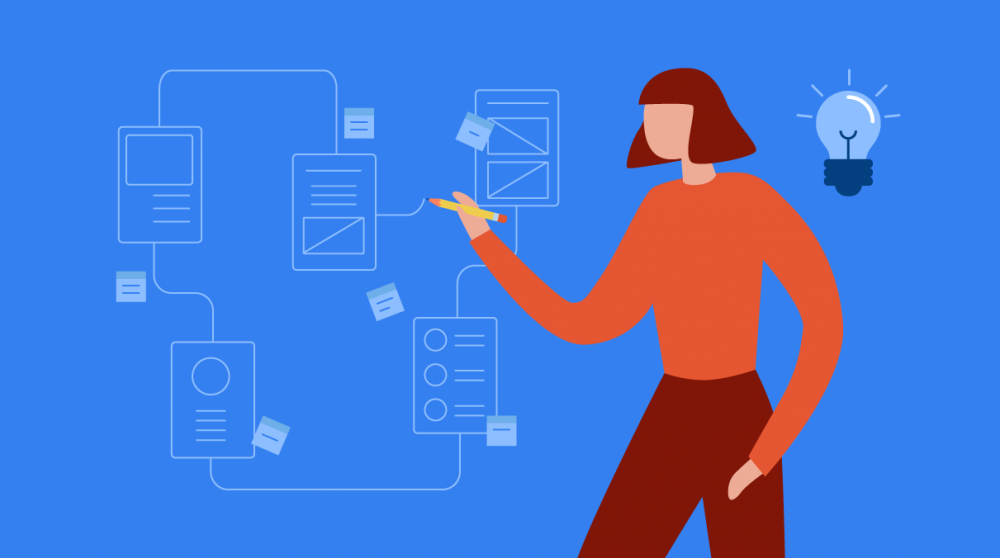“You had me at hello.”
Is this how new customers feel about you? Wouldn’t it be awesome if you could engineer this sentiment into every new customer?
After all, good customer relationships start with good customer onboarding.
So, what kind of first impression does your business make on new customers?
Chances are that if you aren’t 100% sure it’s a positive one, you’re leaving room for a poor experience. In turn, you’re increasing the likelihood of customer churn or poor conversion rates.
Take Groove, for example. The customer support platform conducted an audit of its own onboarding practices. They found that designing an onboarding experience that helped customers respond to an orchestrated series of prompts increased their free-to-paid conversion rate by nearly 80%!
With a carefully constructed onboarding process, you can win over your customers from the very first interaction. Even better, you can nurture customers into lifelong brand advocates that provide even more value to your business in the form of referrals, larger purchases, and positive reviews.
Customer onboarding drives revenue – period.
If you want to build a better, more consistent, and automated customer onboarding process, this article will help you understand how to pull it off.
Understanding the Customer Onboarding Process
Customer onboarding is more than just the welcome mat you roll out to new customers. It involves building an ongoing relationship with each of your customers or clients.
A good onboarding workflow encompasses the entire process of familiarizing new customers with your product, service, or brand – from getting started, to mastering the basics (and the not-so-basics), to providing support throughout the duration of the customer lifetime.
The tricky part is making sure all of the legal and logistical items are taken care of, while also making the process as easy and straightforward as possible for the customer.
Fortunately, onboarding can be streamlined with the right tools and automation. Building an automated customer onboarding process is the fastest way to take new customers from account creation or purchase to full understanding of your product or service.
Depending on the complexity of your solution and the angle of its learning curve, customer onboarding might include many of all of the steps outlined below.
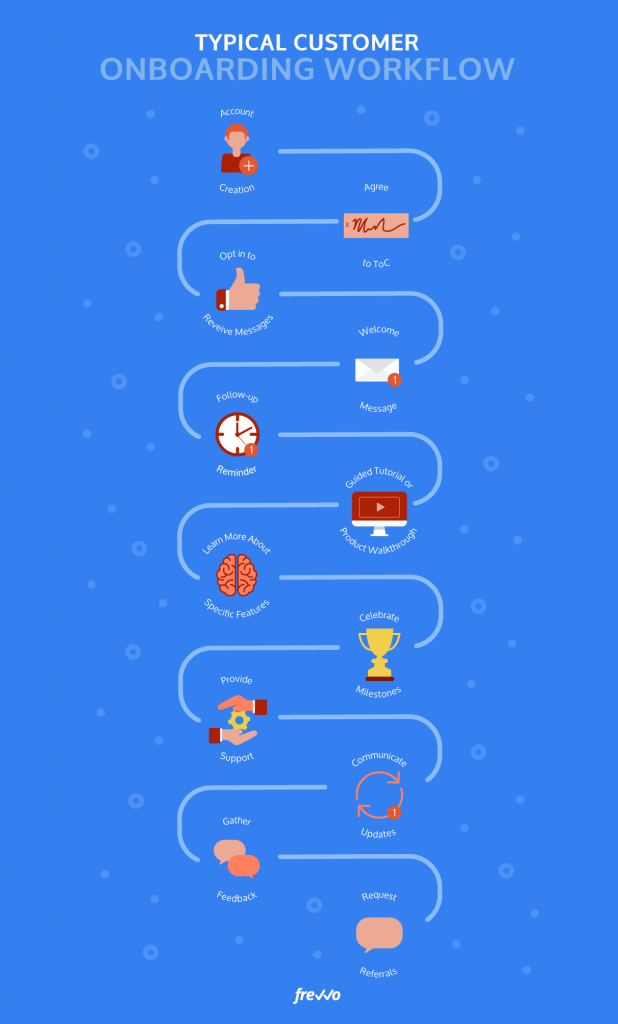
- Registration or account creation: A quick and easy registration process (including a simple way to opt in to receive messages or notifications and acceptance of your ToC).
- Welcome message: A welcome email or notification once the customer has registered.
- Reminders (optional): A series of follow-up messages for customers who don’t log in or complete onboarding within a certain timeframe.
- Product setup: A step-by-step guide to getting started. This might include an interactive walkthrough of the product, an introduction to key elements of the product, tips on how to maximize value, and an invitation to access additional guides and tutorials.
- Education and nurturing: Provide opportunities for additional learning. This might be an email series, FAQ page, or how-to videos that encourage customers to explore specific features and offerings.
- Milestones: Acknowledgement when customers complete onboarding steps, take certain actions, or use specific features for the first time (i.e. “Congratulations! Your application has been submitted successfully.” or “Nice work! You’ve created your first dashboard.”)
- Support: Offer reliable customer support along the way.
- Ongoing communication: Regular check-ins and follow-ups to ensure customers are getting everything they need from your solution. Provide updates on any news or updates to the product or service.
The Crucial Link Between Customer Onboarding and Business Growth
Creating and practicing a consistent customer onboarding process is one of the most important parts of growing a business.
Not only does effective onboarding leave customers with a positive first impression, but it also helps customers take full advantage of your product, service, or offering – thereby encouraging buy-in from the first interaction and planting the seed of long-term loyalty.
By building a consistent onboarding process and, even better, by automating much of the workflow, you can empower new customers to get started, learn about, and master your product more quickly.
Setting up a systematic, automated onboarding process allows your business to:
- Provide consistent onboarding experiences for all customers;
- Minimize churn rate and reduce customer acquisition costs;
- Increase retention and revenue. On average, existing customers spend 67% more than new customers;
- Inspire stronger customer loyalty, leading to greater brand advocacy and more referrals; and
- Maximize customer lifetime value.
Four Signs Your Customer Onboarding Workflow Needs an Upgrade
In order to improve the customer onboarding experience, you must first understand what’s wrong with your existing process (or lack thereof). That means reflecting and identifying potential weaknesses, obstacles, and bottlenecks that might get in the way of an otherwise positive onboarding experience.
Not sure if your current onboarding process is in need of an upgrade? There are four key signs that your customer onboarding workflow needs improvement.
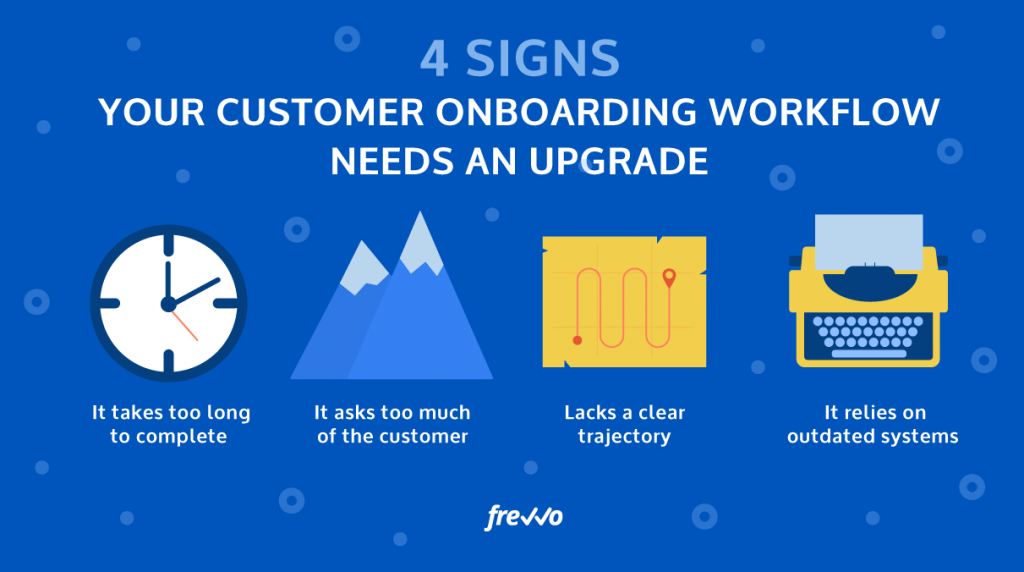
Here’s a quick overview of the four most common onboarding problems that lead to frustration, churn, and lost revenue.
1. It Takes Too Long
If your onboarding process takes too long to complete, you risk losing customers due to frustration or lack of momentum. The longer it takes to complete, the higher the chances of customers getting stuck part way or abandoning the onboarding process altogether – which means they won’t get full value out of your product and are more likely to churn.
This can happen if your team needs to manually enter data, perform backend tasks; or verify accuracy in between steps; or if your customers are forced to print out forms, fill them out, and then wait for approval before moving on. A lengthy onboarding process can also mean there are too many individuals involved.
2. It Asks Too Much of the Customer
Sometimes, less is more. Although a good onboarding process is thorough, you still need to balance the benefit of additional steps with the amount of effort required of your customers.
If there are too many steps involved or too many forms to fill out, the customer is more likely to try to skip ahead or give up entirely. One of the best options for minimizing customer effort is to automate as much of the process as possible (for instance, by populating forms with information they’ve already given you).
3. It Lacks a Clear Trajectory
What is the actual goal of your customer onboarding workflow? Do each of the steps in the workflow build toward that single moment of completion or milestone?
If not, then your workflow lacks a clear trajectory.
You haven’t thoroughly defined what “finished” means from the customer’s perspective. That’s the critical first step in mapping out how you move a customer from start to finish.
4. It Relies on Outdated Systems
Customer onboarding can be a messy process.
Whether you’re a manufacturing business bringing on a new customer, an ad agency bringing in new clients, or a SaaS business that’s onboarding a new user, the steps involved can easily get muddied, forgotten, or overlooked.
Most commonly, this happens when companies rely on manual processes to work through a defined set of onboarding steps.
But it can be solved with a relatively simple solution: Automation.
Using the right technology to power your onboarding process means that you can build and execute a clean, consistent, and effortless onboarding workflow every time.
Building a Customer Onboarding Workflow with frevvo (In 5 Steps!)
If you recognize any of the challenges mentioned above, you’re probably looking for ways to improve your onboarding workflow and deliver a better customer experience.
So, when it comes to refining the customer onboarding process, where should you start? Follow these steps to build a streamlined, consistent, automated onboarding workflow using frevvo’s simple workflow software.
Step 1: Define the Onboarding Goal
Don’t make the first critical mistake and skip over the design phase of the process. Before you dive into a customer onboarding solution, you need to begin by defining the workflow.
That means starting with the goal in mind.
Answer this question: What do you want your new customer to accomplish or receive at the end of what time period?
Depending on your business, the answer could be any number of things. You could want them to use your software or system, access a specific feature, or complete a contract.
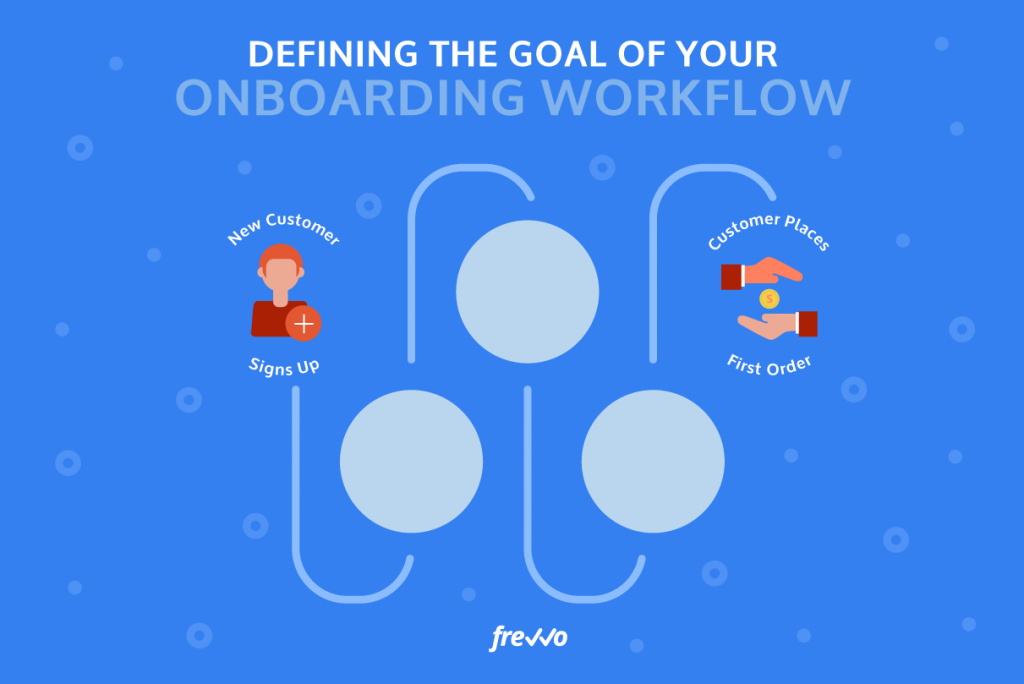
In either case, there are two dimensions of the onboarding workflow that truly matter here:
- Goal
- Timeline
Based on these two variables, you’re able to work backward to define each step in the workflow.
Step 2: Map out the Onboarding Process
Based on the stated goal of the onboarding workflow, you should be able to work backward within the timeline to identify each of the specific steps that the customer will need to take from start to finish.
This gives you the basic journey and map for your workflow process.
Step 3: Create a Form to Initiate the Onboarding Process
Jumping into frevvo, the first step in defining your customer onboarding workflow will be creating a form that captures all of the details and information you need from the customer.
This could be a customer-facing form that they complete or an internal form that your team completes or gets completed through an integration with your website, app, or another system.
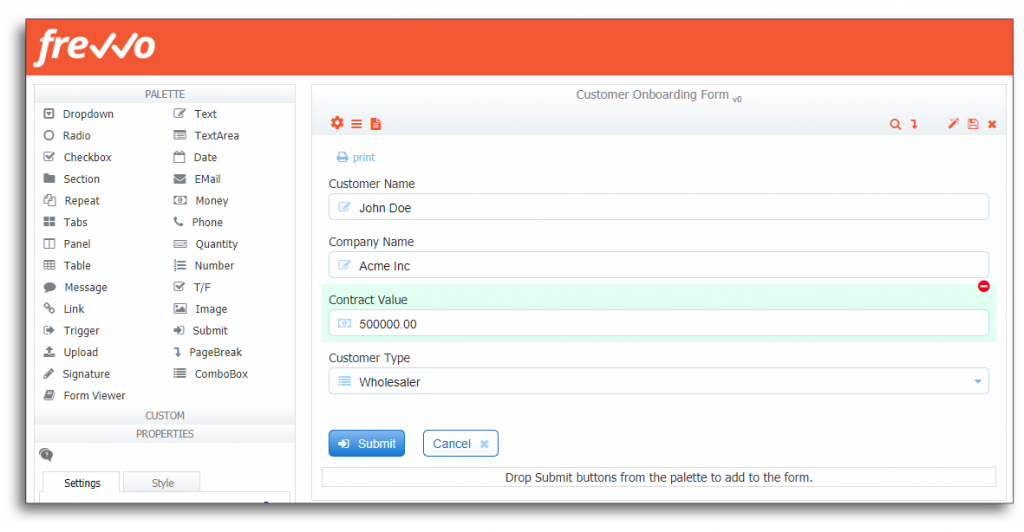
It’s up to you whether you want to start from one the dozens of pre-built workflow templates or start from scratch with your own form.
Step 4: Map the Workflow
Based on the form inputs, you can define the workflow to meet your business’s specific needs.
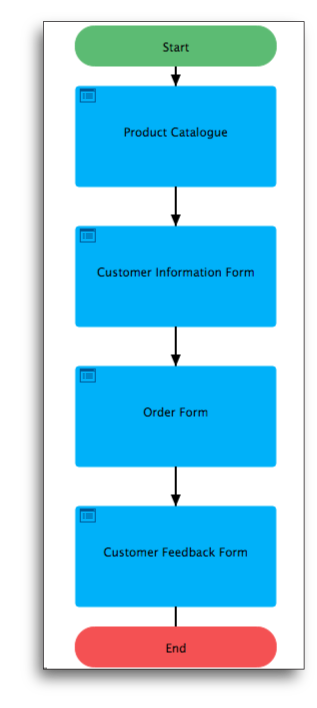
Increase Retention & Grow Your Business with Solid Customer Onboarding
Done well, customer onboarding should result in long-term customers who get the most possible value from your product or service. When it comes to revamping core business processes like customer onboarding, using the right technology can make all the difference.
In order to ensure your onboarding process makes a positive first impression on your customers, it’s important to use a business workflow planner like frevvo. By building a consistent onboarding workflow, you can ensure every new customer fully understands how to use your product or service.
Want to make a better first impression and deliver better customer experiences? Start your 30-day free trial of frevvo today and see how easy it can be to build an automated customer onboarding process.


